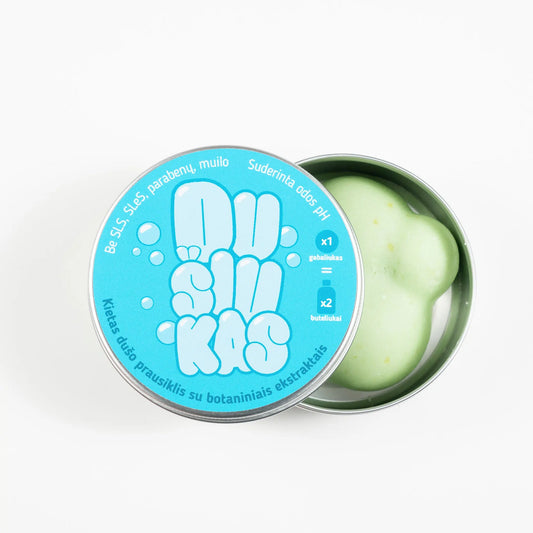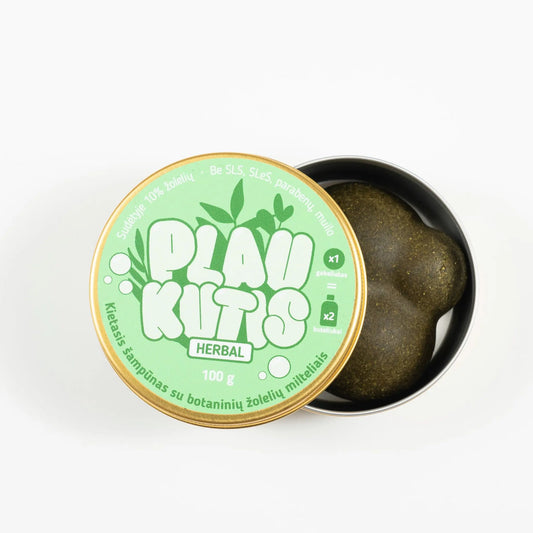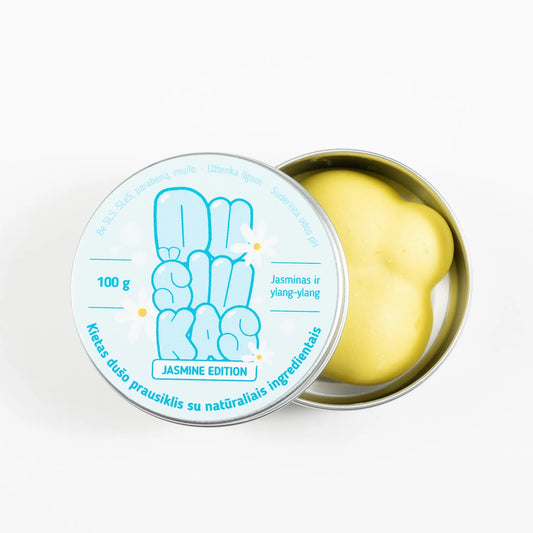1. Desire to regain natural hair color
Have you ever looked in the mirror and thought, “Was that strand always gray?” You’re not alone. A 2023 study in Beauty Journal found that 62% of women between the ages of 30 and 50 notice gray hair earlier than expected .
It's not just about looks - it's about identity.
In many cultures, hair color represents youth, vitality, and even life energy. In ancient China, gray hair was considered a sign of a weakening of the life force, Qi. In Victorian England, women would dye their gray hair with crushed walnuts to avoid appearing to be losing their social status.
But today, more and more women are asking: "Can I get my natural color back without dye?"
And this is no longer just a theoretical question.
A 2021 study from Columbia University found that in some cases, gray hair can naturally regain pigment — especially when stress is reduced and the body recovers. It was the first scientific evidence that graying can be at least partially reversed.
Of course, this isn't guaranteed for everyone. But the discovery has sparked global interest: is it possible to turn back the clock naturally ?
Because really, this topic is not just about color. It's about hope, health, and how we want to feel about ourselves .
In this article we will look at:
-
How Hair Color Appears (and Why It Disappears)
-
Is it possible to restore it without paint?
-
What the latest research and real-life cases say
-
Where are the myths and where is the reasonable hope?
-
What gray hair can mean not only physically but also emotionally
Because whether you decide to love your silver or look for ways to stop it, the choice is yours.

2. How hair gets its color – and why it loses it
To understand whether it's really possible to regain your natural hair color, we first need to understand how it occurs in the first place - and why it disappears .
Melanocytes – the “dyers” of your hair
Hair color is given by melanocytes , which are pigment-producing cells located in each hair follicle. These cells produce melanin , which is also responsible for skin and eye color.
There are two main types of melanin:
-
Eumelanin – gives brown or black shades
-
Pheomelanin – creates red, yellowish or copper shades
Each person has a unique combination of these pigments - that's why our hair colors are so diverse.
Interesting fact: natural blondes have less melanin than brunettes or redheads , so their hair is more likely to turn gray earlier.
Why does hair turn gray?
Over the years, melanocytes deplete . For some, this starts in their 20s, for others, it doesn't start until after their 50s. Reasons:
-
Aging : with age, the activity of stem cells that renew pigment cells decreases
-
Oxidative stress : cells "rust" from UV rays, pollution, emotional stress, and inflammation
-
Hydrogen peroxide buildup : yes, your hair produces its own bleach internally . With age, the body loses its ability to break it down, causing melanin to become damaged.
When the melanin-producing cells stop working altogether, new hair grows gray (with partial pigment) or white (without any pigment).
A 2016 study in Japan found that the depletion of follicle stem cells is one of the main causes of graying . When these cells die completely, it becomes impossible to restore color.
However, graying does not occur evenly. As a result, we often see a “salt and pepper” effect - each hair has its own life cycle.
Cultural interest: Among some North American Indian peoples, gray hair was considered a sign of spiritual maturity rather than a symbol of aging. Some tribes considered it a sign of wisdom and authority .
So, your gray hair is not just a biological process, but also a potential story that your life tells.

3. Can gray or white hair naturally regain pigment?
This is a question many people ask: can my hair really go back to the way it was – without dye?
Surprisingly, science says... sometimes - yes .
Breakthrough: Columbia University 2021 study
One of the most interesting discoveries of recent years was a 2021 Columbia University study published in the journal eLife . Researchers analyzed individual hair strands using microscopic scanning and chemical markers.
They noticed that some gray hair regained its natural color - completely naturally, without any dye.
Even more interesting? In some cases, the color change occurred over a period of days or weeks . Imagine a white strand, with its natural color starting to grow back in the middle. It's as if the hair is turning back time.
How is this possible?
Scientists believe that in some cases, melanocytes may be "dormant" but not dead . If the cause of the pigment loss (such as stress or inflammation) is removed, these cells can start functioning again.
When is the return of pigment noticeable?
-
After illness or surgery : some women notice that their hair color partially returns after recovering from a serious illness or after rehabilitation.
-
Stress reduction : Both research and anecdotal evidence suggest that graying can be reduced when stress levels drop.
-
Nutritional restoration : People with B12 or copper deficiencies have noticed that once their deficiencies are corrected, their hair starts to grow back with more pigment.
-
Hormonal changes : Sometimes hair darkens after pregnancy, thyroid treatment, or hormone therapy
When does this no longer become possible?
Age is an important factor. When hair turns white for a long time, or when melanocytes die completely , the follicle loses its ability to produce melanin . In this case, the natural return of color becomes almost impossible.
Dermatologist Dr. Melissa Piliang explains:
"If the follicle is still healthy and the pigment cells are only temporarily inactive, there is a chance. But if they are already dead, they will not be able to be restored."
Even a partial return of color is already an achievement.
It may just be a few darkened strands. They can lighten again if stress returns. But these small changes prove that hair color isn't always a one-way street.
And for many women, it is a sign of hope.

4. The role of stress in graying – and its restoration
Have you heard the saying, "Love overnight"? It turns out that it's not exactly a myth.
While the color doesn't literally change overnight, research confirms that chronic stress can accelerate pigment loss . And what's even more interesting is that in some cases, the color can return if the stress is reduced .
How does stress affect hair pigment?
A 2020 Harvard University study published in the journal Nature showed that stress activates the sympathetic nervous system , the same one responsible for the "fight or flight" response.
This response releases norepinephrine , which directly affects melanocyte stem cells in hair follicles – the ones that produce pigment.
The result?
-
Stem cell decline accelerates
-
When they are depleted, melanin is no longer produced.
-
New hair that grows during this period is gray or white.
Going Back: Your Hair as an Emotional Diary
In a study at Columbia University, scientists discovered that hair keeps "records" of the stress you experience - like an emotional diary of a tree's annual rings.
Each centimeter of hair corresponds to about 1 month of growth . The researchers saw that the pigmentation of some hairs changed in segments - from dark to gray, then back to dark. This suggests that color can be restored if stress levels are significantly reduced.
For one study participant, this happened after a two-week vacation . For another, it happened after changing jobs and leaving a toxic environment.
Helpful tip:
If you see that graying has accelerated during a difficult period in your life, you are not imagining it. Although not all graying caused by stress is reversible, with timely self-care, it is possible to at least partially stop or even restore pigment .
So the next time you think that relaxing or pampering yourself is just a luxury, remember: it can help your hair stay colored .

5. Antioxidants and nutrients that can support hair pigment
📌 Keywords: copper gray hair, iron hair color, B12 gray hair prevention, catalase for hair color, antioxidants against gray hair
The saying "you are what you eat" can be directly applied to your hair.
Nutrient deficiencies and oxidative stress are common but often overlooked causes of premature graying . While no product or supplement can work miracles, some specific substances can help maintain pigment – especially if graying is just beginning.
5.1 Copper and iron – the basis of melanin synthesis
Both of these substances are necessary for the production of melanin.
-
Copper activates the enzyme tyrosinase , which is necessary for pigment formation.
A 2012 study found that people who went gray early had lower than normal levels of copper in their blood . -
Iron helps supply hair follicles with oxygen. Low ferritin levels (an indicator of iron stores) are often associated with thin, brittle hair and graying.
🧃 Where to find?
-
Copper: in sesame seeds, lentils, nuts, dark chocolate
-
Iron: in spinach, beef, molasses
5.2 Vitamin B12 and folic acid – oxygen for your follicles
Vitamin B12 is most commonly associated with premature graying , especially among young women.
Signs of deficiency:
-
Fatigue
-
Poor attention
-
Pale skin
-
Gray hair, especially at the temples
Folic acid (B9) works together with B12 to support DNA repair and blood production.
🧃 Where to find?
-
B12: in eggs, beef liver, sardines, grain products
-
Folic acid: in spinach, avocados, beans
Interesting fact: one 25-year-old woman who suffered from severe B12 deficiency noticed her hair pigment returning within 3 months of taking supplements .
5.3 Catalase and the hydrogen peroxide problem
Yes – your body naturally produces hydrogen peroxide (H₂O₂) . As you age, the amount of the catalase enzyme that breaks it down decreases.
The result? H₂O₂ bleaches your hair from the inside out , even if the melanocytes are still alive.
Some supplements offer catalase sources or plant extracts to help restore this balance, but their effectiveness has not yet been fully proven.
🔬 A 2009 German study suggested that peroxide accumulation could be a more important cause of graying than genetics.
5.4 Glutathione, resveratrol, curcumin and polyphenols – an army of antioxidants
Oxidative stress is like the “rusting” of cells. Antioxidants stop this process.
The most important:
-
Glutathione – the “master” among antioxidants, helping to regenerate others
-
Resveratrol – found in grapes and red wine, protects pigment cells
-
Curcumin – from turmeric, a strong anti-inflammatory
-
Polyphenols from green tea – support stem cell viability
💡 Tip: Choose a nutritious, antioxidant-rich diet , get your blood tested for possible deficiencies. It doesn't promise miracles , but it can definitely help maintain your existing pigment.

6. Peptides, stem cells and anti-wrinkle products for hair
We've already discussed how diet and the internal state of the body affect hair pigment. But what if you want to act from the outside ? Are there really serums, sprays, or lotions that can restore hair color?
Short answer: maybe – but be careful.
Peptides – small molecules, big expectations
Peptides are short chains of amino acids that act as biochemical “messages” to cells . They have long been used in cosmetics for the skin, particularly to stimulate collagen synthesis. However, some peptides are now being studied for their potential effects on melanin production .
One of the most well-known is palmitoyl tetrapeptide-20 , which mimics α-MSH (alpha melanocyte-stimulating hormone) . It sends a signal to melanocytes to start producing pigment.
🔬 Early lab studies suggest that this peptide may activate pigment production in follicles – but so far the data is mostly from test tubes, not real life.
💡 Some serums already offer this ingredient, claiming it can “restore natural color.” In reality, it hasn’t been widely tested on humans yet .
Stem cells – the holy grail?
Stem cells are universal cells that can turn into any other cell in the body – including melanocytes .
In 2021, Japanese scientists created functioning hair follicles with pigment-producing cells in the laboratory – in mice .
This is an important step forward - but for now it is at the laboratory level , not a reality in pharmacies.
By the way, many products labeled "stem cell" actually contain plant stem cell extracts , which act as antioxidants rather than actually regenerating hair cells.
Do anti-wrinkle products work against graying?
The market is full of products promising:
-
Delay graying
-
Enhance melanin production
-
"Awaken" the follicles
Some of the compositions are really interesting:
-
Copper peptides
-
Biotin
-
Arginine
-
Herbal antioxidants
But do they actually restore color? Dermatologists are skeptical.
💬 Dr. Wilma Bergfeld, a dermatologist at the Cleveland Clinic, says:
"These products can improve the condition of your scalp and help maintain your existing color—but don't expect miracles."
💡 Summary: These remedies can help slow down the graying process if the follicles are still alive. However , expecting a shampoo to turn gray hair dark in a month is too optimistic.

7. Real women, real stories – the return of pigment or a peculiar illusion?
Science is slowly catching up, but many women are already claiming that their hair has regained its color naturally - without dyes, without miracle treatments, without tricks.
But is it real? Or is it just our eyes and expectations deceiving us?
Let's take a look at what real women have to say - and what experts think about it.
"My roots are dark again - what's going on?"
Maria, 42, from Portugal , shared her experience on a wellness forum. After she quit her stressful job , started doing yoga, eating healthy, and getting some rest, she noticed:
"I had silver strands at my temples, but after a few months I saw that the new hair was growing back brown - the same as it was before."
And she's not alone. Similar stories can be found on forums, Reddit threads, and YouTube videos. Recurring motifs:
-
Drastic stress reduction
-
Taking nutritional supplements, especially B vitamins
-
A healthier, plant-based diet
-
Meditation, breathing practices, Ayurvedic herbs
-
Restoring hormonal balance (after pregnancy or illness)
But is this really the return of pigment?
Sometimes, these changes may be an optical or biological illusion :
-
Lighting : Gray hair reflects light differently than pigmented hair – depending on the angle of the light, hair may appear darker.
-
Natural shedding : older gray hair falls out, and if the body has improved its health during that time, new, darker hair may grow back.
-
Forgotten dye : Some women forget when they last dyed their hair, and the natural color that grows back seems like a "throwback."
However, even doctors admit that partial, spontaneous pigment return is possible , especially if the melanocytes have not yet disappeared.
💬 Dermatologist dr. Dhaval Bhanusali observes:
"We have seen cases where hair darkens slightly after significant health or lifestyle changes. This is rare, but possible."
💡 So, is this real change or an illusion?
Sometimes yes, sometimes no. But even a small hope is a strong emotional impulse that gives many women the meaning to take care of themselves.

8. Hair restoration myths and misleading information
If you've ever searched the internet for "how to regrow gray hair naturally," you've probably come across hundreds of "miraculous" tips, homemade recipes, and even strange oils. But do any of them work?
The short answer is that almost all of them are myths . Let's take a look at the most popular ones and their validity.
❌ Myth 1: Onion juice restores gray hair
This "trend" has received millions of views. It is said that onions contain catalase , which breaks down hydrogen peroxide, a substance associated with graying.
But the problem is that:
-
Catalase in onions is unstable and breaks down quickly
-
It does not penetrate the skin to the follicle , where it should act.
In addition, the scalp emits an onion smell for a long time - and there is no result.
❌ Myth 2: Baking soda and lemon remove gray hair
This recipe sounds like a chemical bomb: the alkalinity of baking soda + the acidity of lemon. The internet suggests mixing them and rubbing them on your head.
Unfortunately, this:
-
Damages the hair cuticle , making it brittle and dry
-
It doesn't help the pigment return in any way - it only damages the strands more
❌ Myth 3: Coconut oil eliminates gray hair
Coconut oil is excellent at moisturizing and reducing breakage, but it has no direct effect on melanocytes or pigment production .
It's a great conditioner - but not a miracle pigment restorer.
❌ Myth 4: Ageing only happens because of age
Not true. While age is an important factor, genetics, stress, diet, and hormones also play a role . That's why some women start going gray in their 20s.
❌ Myth 5: If your hair is already gray, it will stay that way forever
Most of the time, yes. But not always . As we discussed in the previous sections, in some cases, the pigment can return if the melanocytes have not yet disappeared.
✨ Conclusion? If someone promises to "restore your natural color in 7 days" - it's probably just a marketing gimmick. Choose science-based methods instead of miracle ointments from Pinterest.

9. What is real – and what is not
The idea of being able to restore your natural hair color is tempting. But what does science actually back up – and what is worth leaving to wishful thinking?
Let's look at this realistically.
✅ What might be possible
-
Partial pigment return is possible, but rare. It is most likely to occur:
-
at a younger age (up to 40 years old)
-
when gray hair is still early
-
after stress reduction or health restoration
-
restoring missing nutrients (e.g. B12, copper)
-
-
Lifestyle changes can help stop graying or even restore some pigment if the follicles are still alive.
-
Antioxidants and vitamins can strengthen follicles and promote healthy growth – which helps maintain your existing color for longer.
❌ What is most likely impossible
-
Completely restore white hair to its original color – if pigment production has completely stopped, it cannot be restored.
-
There is currently no safe, scientifically proven quick way to "cure" gray hair overnight .
-
Restore color after 60 years , when follicular melanocytes are usually already lost.
💬 Dermatologist Dr. Shilpi Khetarpal summarizes this:
"If the melanocytes are still sleeping, there is a chance. But if they are already dead, the process is irreversible."
✅ In other words – if your hair is still “listening” – it can be worked on. If not – it’s time to find beauty in what comes naturally.

10. The psychological significance of restoring hair color
Hair color changes are not just a biological process. For many women, it is an emotional event , sometimes even a kind of crisis point.
Because when color changes, so does how we see ourselves .
Loss of color is sometimes like loss of control
The first gray hair often appears unexpectedly. For some, it symbolizes a natural stage of life, for others, anxiety , stress , the end of youth , or even premature "defeat."
A 2022 study published in the Journal of Cosmetic Dermatology found that 67% of women under 45 who noticed gray hair experienced decreased self-confidence – even if others around them didn't notice.
And the return of color is like regaining inner power.
When pigment returns, even if only slightly, many women accept it with joy and relief . It gives us a sense that the body can recover , that we still have the power to change our state.
This becomes a symbolic sign :
-
That health may be restored
-
To get out of emotional exhaustion
-
To feel like ourselves again
Even if the color doesn't return, the process itself – taking care of yourself, improving your diet, getting rest – helps restore your self-esteem and connection to your body .
💡 In fact, when it comes to hair color, the most important thing is not what others see. It's how you feel about yourself in the mirror.

11. Conclusion: Reject or accept – you have a choice
So... is it really possible to reverse graying naturally?
The honest answer is sometimes yes, but not always . But the bottom line is that you have more power than you think .
Here's what you can do right now:
-
Take care of your diet by supplementing with missing nutrients such as B12, copper, or iron
-
Reduce stress by protecting your melanocytes from burnout
-
Avoid myths , choose sound methods, and abandon harmful experiments
-
Try gentle products that support hair and scalp health
-
Rewrite your relationship with graying , whether you want to stop it or proudly embrace it
Maybe your hair will darken again. Maybe it will slowly turn silver. Or maybe it will just stay the shade that suits you best.
Every option is correct if it's yours.
Because your hair is more than just strands. It's part of your story. Part of your identity. And part of your journey to self-acceptance.
💬 Encouragement: Share your experiences or thoughts in the comments. Maybe your story will inspire another woman to look at her reflection with love, whether she sees gray or colored hair.













